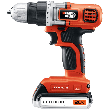Over time, all cabinets will become nicked, damaged, or gouged in some way or another. While you can always allow the situation to remain, you don't have to live with it like that. Touching up cabinets is a relatively easy way to fix any small problem that you may have, and doesn't take a whole lot of work or experience to accomplish. All you really need to do is follow these guidelines, and you can quickly having your cabinets looking great again.
- Remove old lacquer. Lacquer is one of the most common types of varnish or sealer used by manufacturers to give a cabinet its look. In order to begin touching up a cabinet, you need to remove the lacquer that is around the damaged area. This will allow you to get a better look when you are finished. Apply a little lacquer thinner to a cloth, and work the thinner into the wood.
- Spray on new lacquer. You can purchase some spray on lacquer at most home improvement stores, so pick some up that matches the current color of your cabinets. Carefully follow the directions on the back of the spray can, and apply the lacquer to your cabinets. Between each application, allow each coat to dry. This will allow you to more exactly match the current color of your cabinets.
- Touch up directly. For small damaged areas, get a can of touch up lacquer and apply it with a brush. Once again, allow the lacquer to dry completely between each application. Use the smallest brush possible, to avoid any over application. If you are nervous at all about "painting" the lacquer on by hand, then feel free to practice a little bit.
- Sand rough edges if necessary. Once you have applied the lacquer to the cabinets, you may want do a little sanding. Often when you apply lacquer to an area it will not match the previous lacquer exactly. Usually there is some kind of discrepancy in the depths which will give a rough appearance to your cabinets. If you notice this with your cabinets, you may need to do a little sanding. When you sand these rough areas, use the lightest possible touch to ensure that you don't inadvertently cause more damage. Continue to sand the areas until you can tell no difference between the new lacquered areas and the old by touch.
Author Bio
Lee Wyatt
Contributor of numerous Tips.Net articles, Lee Wyatt is quickly becoming a regular "Jack of all trades." He is currently an independent contractor specializing in writing and editing. Contact him today for all of your writing and editing needs! Click here to contact. Learn more about Lee...
Preserving Fruit
The only thing that is better than store bought fruit preserves is making your own. If you have never had homemade fruit ...
Discover More
Making a Rain Barrel
One of the biggest expenses that any landscaper or gardener usually faces is the water bill. There are several ways that ...
Discover More
Building a Tree House
It can pretty much be taken as a given that every child would love to have a tree house at some point in their life. ...
Discover More
More Home Improvement Tips
Building a Slide
There are few things in the world that seem to bring joy to children as much as a playground and one of the perennial ...
Discover More
Building TV Stands
TV stands are designed to be wonderful pieces of furniture that hold and support our televisions while we watch them. As ...
Discover More
Adding an Extra Phone Jack
Adding a phone jack does not have to be a stressful or expensive process. In fact, it is something that any beginner ...
Discover More

Comments